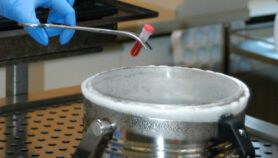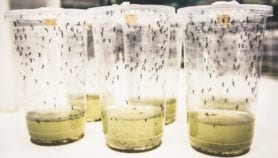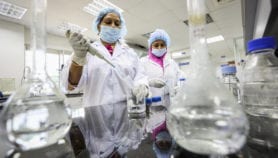By: Jia Hepeng
Send to a friend
The details you provide on this page will not be used to send unsolicited email, and will not be sold to a 3rd party. See privacy policy.
[BEIJING] China is home to the world’s largest gene bank for aquatic vegetables, a seminar heard last week.
The repository, which holds more than 1,700 wild and cultivated specimens from 13 kinds of aquatic vegetables, is based in the city of Wuhan and run by the Wuhan Institute of Vegetable Science.
Liu Yuping, a scientist at the Wuhan Vegetable Research Institute says that the 13 vegetables — which include lotus, water bamboo, taro, water celery, water chestnut and watercress — are the most frequently planted aquatic vegetables in the world.
Eleven of them come from China.
Aquatic vegetables are favourite foods in southern parts of China. In Wuhan, where more of the vegetables are produced than anywhere else in the country, 500,000 hectares of them are planted each year, yielding 500,000 tons of produce worth 1 billion yuan (US$123.46 million).
Liu says aquatic vegetables are “environmentally friendly”: they suffer from few diseases and pests and can be grown without chemical fertilizers.
He says the institute is seeking to embark on research collaborations to determine what genes lie behind some of these attractive traits, such as resistance to pests.
The information could be used to improve other crops.
He adds that they would also like to map the genetic sequences of some of the species, but that this will be more difficult because of the large sums of money required.
The Wuhan Institute of Vegetable Science has been developing the gene bank for 15 years.
Most of the vegetables are conserved as plants, replanted annually in open fields. Reproducing them asexually allows the researchers to ensure the genes of the different plants don’t mix, preserving their genetic identity.












